Enjoy The Mysteries Of Nature! Explore Abukuma Cave In Fukushima

Abukuma Cave, a large limestone cave in Fukushima, was naturally formed over 80 million years ago. Enjoy various types of stalactite hanging like icicles as you venture through here. Learn more about this unique destination that receives so many international visitors drawn to its fantastic beauty.
Abukuma Cave: A Mysterious Destination in Japan
While cherry blossoms, pristine forests, and mountains are likely on a traveler's itinerary, not many think of visiting a cave in Japan.
However, there are wonderfully mysterious, unique caves to explore in Japan. In this article, we introduce Abukuma Cave, a massive limestone cave found in Tamura, Fukushima Prefecture.
Convenient Access by Shinkansen
Take the Tohoku Shinkansen from either Ueno or Tokyo Station, then alight at Koriyama Station. It will cost 7,600 yen from Ueno Station or 7,810 yen when departing from Tokyo Station (one-way). The travel time is a little over an hour. You can also travel economically by using discount train passes like the JAPAN RAIL PASS or JR EAST PASS.
Fukushima is a large prefecture with areas where trains and buses do not often travel through. We recommend renting a carl after arriving at Koriyama Station. Car rental shops such as ORIX and Nippon Rent-A-Car are at the station.
If you're looking for high-quality services at a low price, click NIPPON Rent-A-Car! official website link and enter our coupon code “jyd3sWbrAM” to get discount price when making reservation with NIPPON Rent-A-Car!
Head to Abukuma Cave!
Once you’ve rented a vehicle, use the car navigation system to get on the road from Koriyama Station. If putting in the cave's name doesn't work, use Abukuma Cave’s address instead: Fukushima, Tamura, Takinemachi, Sugaya Higashikamayama 1
Please also refer to Abukuma Cave on Google Maps.

After about a 50-minute drive, you’ll see a gigantic cliff. This was originally a limestone quarry. Abukuma Cave was first discovered during a mining operation in 1969.
The cave measures a total of 600 meters across. The variety of stalactite, resembling hanging icicles, found in the cave is said to be the largest in Asia.
This beautiful structure is said to have naturally formed over 80 million years. The sight of the cave will make you feel like you're heading back to ancient times.
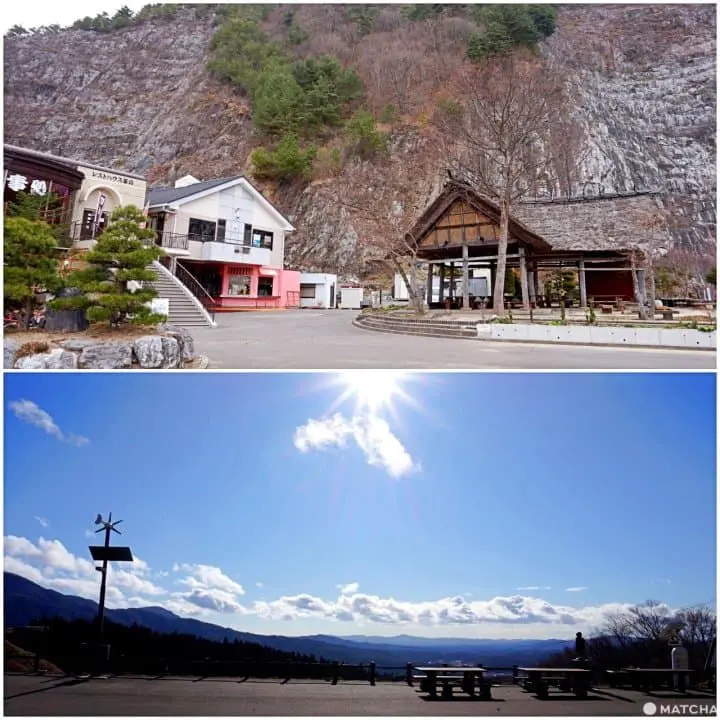
In front of the cave, there's a plaza for comfortably gazing out on the landscape. You'll also find a two-story building with a souvenir shop on the first floor and a cafeteria on the second.
Purchase a ticket at the reception area when you're ready to head inside. Entrance fees are listed below.
| Price | |
| Adult (16 years and up) | 1,200 yen |
| Junior high school (13 – 15 years old) | 800 yen |
| Elementary school (7 – 12 years old) | 600 yen |
| Expedition Route | Additional 200 yen |
Groups of 15 people or more will be charged a group fare.
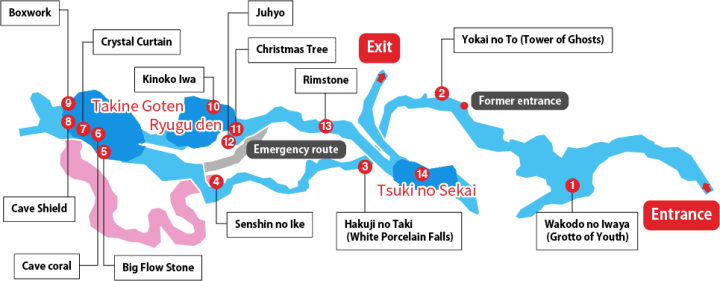
Picture courtesy of Abukuma Cave Administration Office
The blue path outlined in the map above is the Standard Route, which is 600 meters long (40 minutes). The pink path is the 120-meter-long Expedition Route (10 minutes). Let's begin our adventure after purchasing entry tickets!
Encounter Unique Rocks from the Beginning!
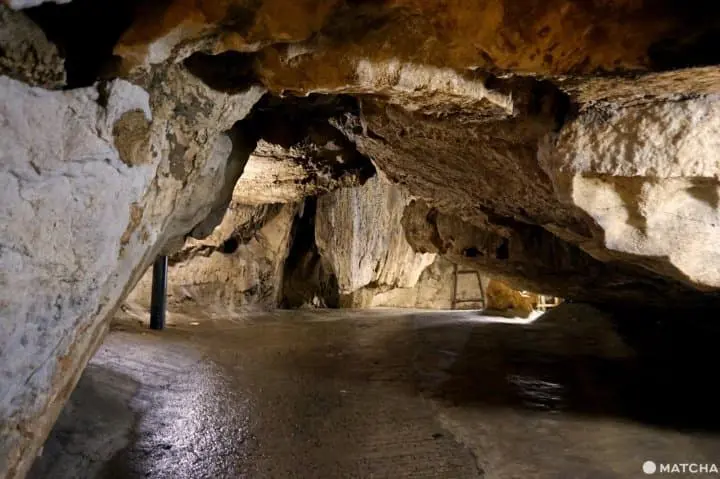
The paths in Abukuma Cave are well-maintained and can be traversed without getting wet. However, you will have to bend down in certain places, walk up stairs, and go through narrow pathways. Make sure to wear clothes that are easy to move in.
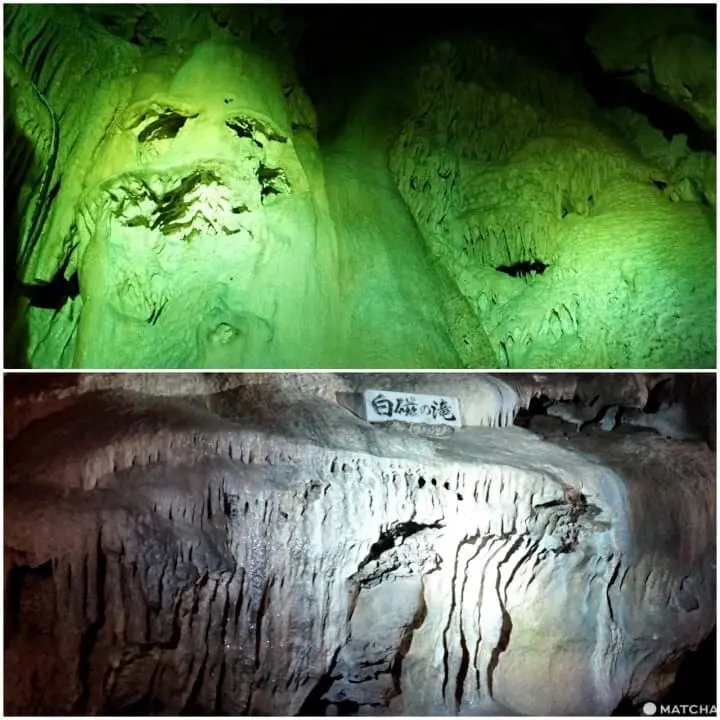
The large, distinctly shaped stalactites—hanging rock formations—have been given names. For example, this ghost-like stalactite at the beginning of the route is called the Tower of Ghosts.
The waterfall-like stalactite is known as White Porcelain Falls.
Explore Further on the Expedition Route
There are employees stationed at the crossroads in the middle of the cave. From here, visitors continue left on the Standard Route, then go up the stairs into a large hall.
If you want to experience more of nature’s mysteries, then we recommend going on the Expedition Route to the right (an additional 200 yen fee).
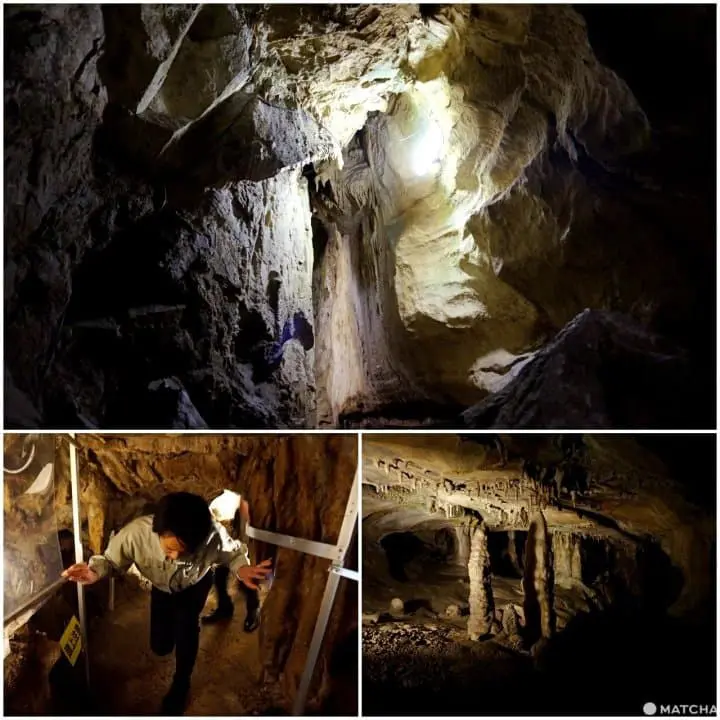
The Expedition Route is about 120 meters long. You may get dirty on your walk as areas of the route become narrow or are dripping with water. However, it’s not necessary to bring a change of clothes.
A transparent pond called Senshin no Ike, or "purification pond," is at the Expedition Route's entrance. Walk further and you’ll discover various stalactites.
Abukuma Cave’s Biggest Attraction! Takine Palace

On the Expedition Route, you’ll arrive at Takine Palace: a 29-meter-tall hall that is the most astounding spot in Abukuma Cave.
Chairs are available for cave-goers to rest. You can also use these chairs to admire the stalactite and take pictures.
Information boards in Japanese or English are in front of these remarkable stalactites. There's also a button that illuminates the hanging rock formations.
If you want to learn more about the cave, download the Omotenashi Guide. This app is available in multiple languages and can be used without an Internet connection. All you have to do is approach a spot, and it will begin displaying various information.
*Obtaining the app requires Internet connection. Please download and install the app before entering the cave.
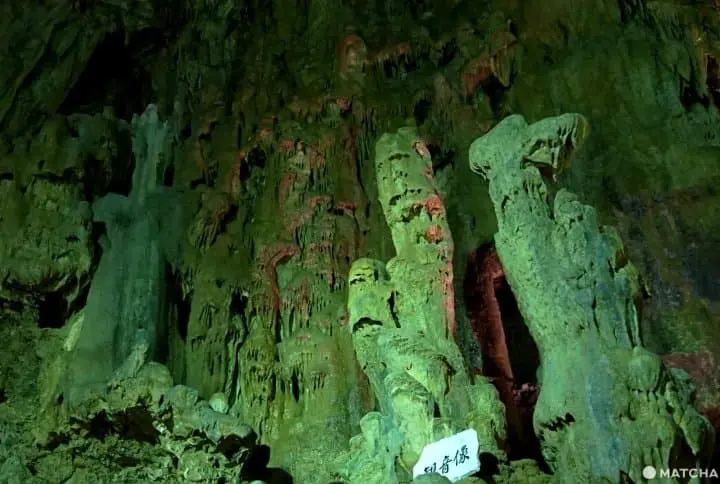
In Takine Palace, you’ll find a variety of unique stalactite. For instance, the strange-looking stalactite in the background of this photo is called the Big Flow Stone.

The largest formation in Japan, the Cave Shield is shaped like a disc in its upper area. A type of stalactite called Boxwork only found in Japan is also located in this area.
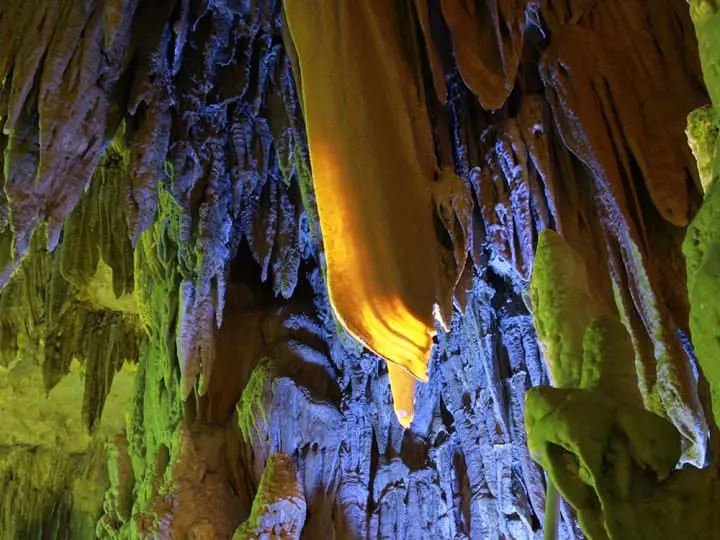
Picture courtesy of Abukuma Cave Administration Office
The Crystal Curtain has a flowy, curtain-like shape. You’ll find several other strangely shaped stalactite in this cave.
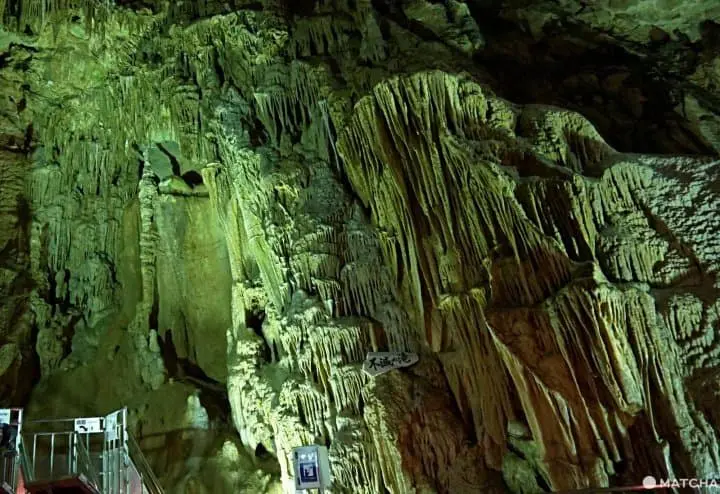
A recommended photo spot is in front of the Indestructible Falls. This formation looks as if a waterfall is flowing from the cave’s ceiling.

Then there’s the Leaning Tower of Takine, a large stalactite sitting adjacent to the route. Take a picture of the stalactite while admiring its magnificent beauty from up-close.
More Cave Highlights at Abukuma
There are several more wondorus natural artworks along the route from Takine Palace to the exit.
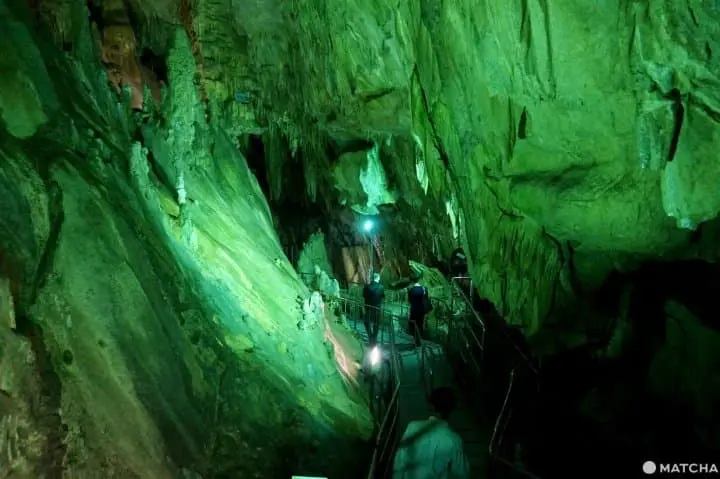
First, there's the 13-meter hall called the Ryukyuden (Dragon Palace). You'll also spot Kinoko Iwa (Mushroom Rock), a mushroom-shaped stalactite at the top.
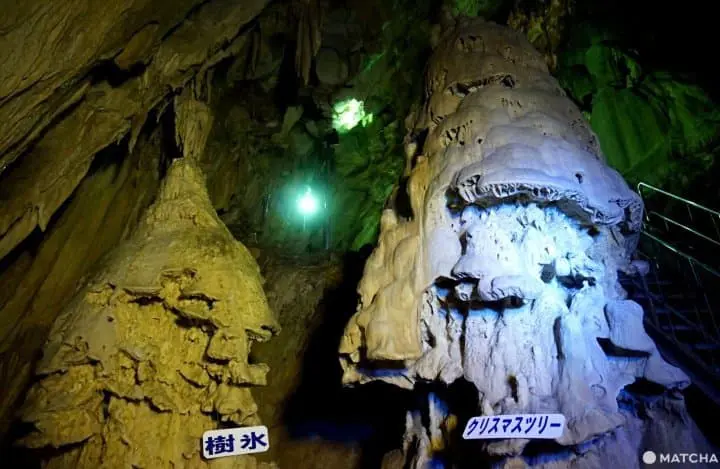
Next is a large “tree” called Juhyo (Silver Frost). It was named for its resemblance to hoarfrost, which completely covers trees in the winter, particularly in northern Japan. The figure next to it is the Christmas Tree.
Walk slightly further and you’ll come across the strangely curved Rimstone.
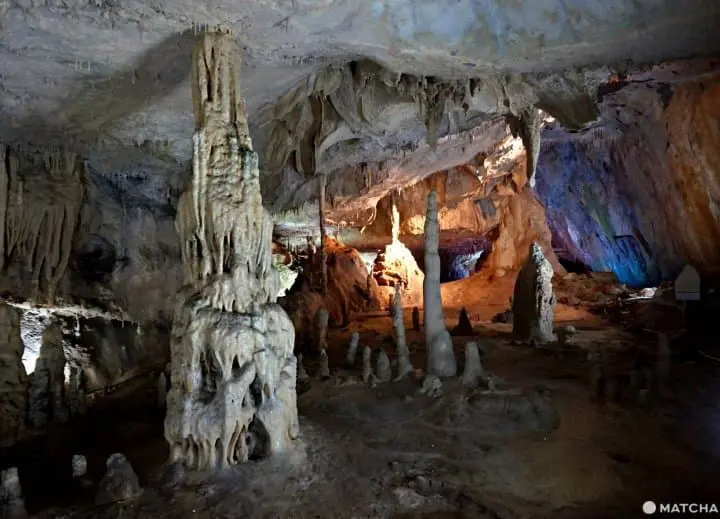
At the front of the exit is Lunar World. Various sizes of stalactite produce an otherworldly atmosphere here when illuminated by lights.
Purchase Sweets and Cute Souvenirs!
You'll find the souvenir shop after walking out of the exit. The floor above the shop is a restaurant. Give yourself some rest by enjoying a meal and snagging some souvenirs!
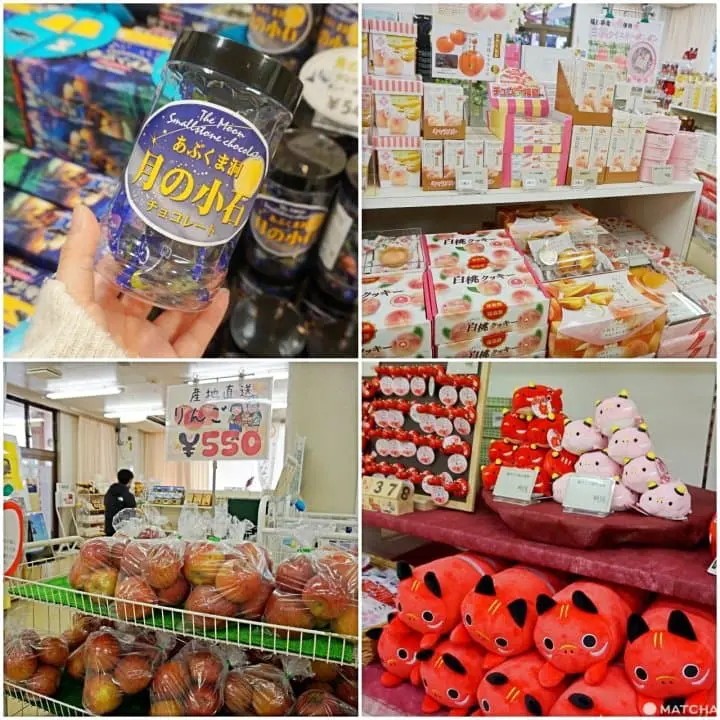
The souvenir shop is stocked with exclusive sweets and fruit produced in Fukushima. Some of the most famous food from Fukushima and the Tohoku region are peaches, zunda (green soybean paste), and beef tongue. You'll find sweets made with these local specialties here, too.
There's also key chains, stuffed animals, and other eye-catching merchandise. The cute plushie doll pictured on the bottom right is Akabeko, a traditional Fukushima good luck charm often found in locals' homes.
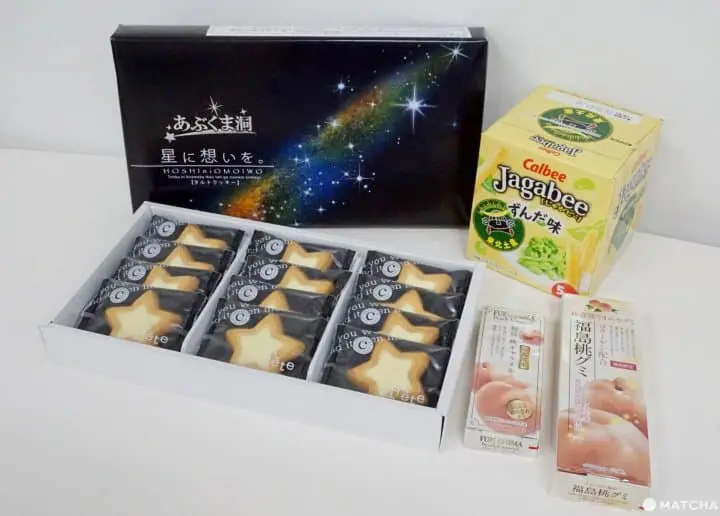
Our writer purchased Abukuma Cave star-shaped cookies, peach-flavored gummies and caramels, and zunda-flavored Jagabee potato sticks. This particular flavor from the Japanese potato snack brand is only sold in the Tohoku region!
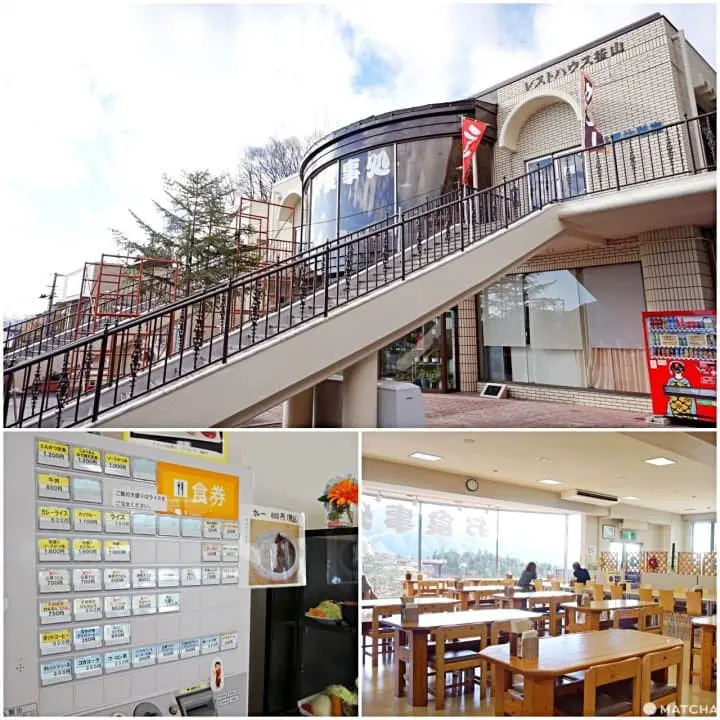
On the second floor, the restaurant offers a variety of dishes. There's katsudon (pork cutlet over rice), curry rice, udon, and mountain vegetable or meat soba. Samples of the dishes are on display in a window case.
To order your meal, you'll need to purchase a meal ticket at the ticket machine, then give it to an employee at the counter.
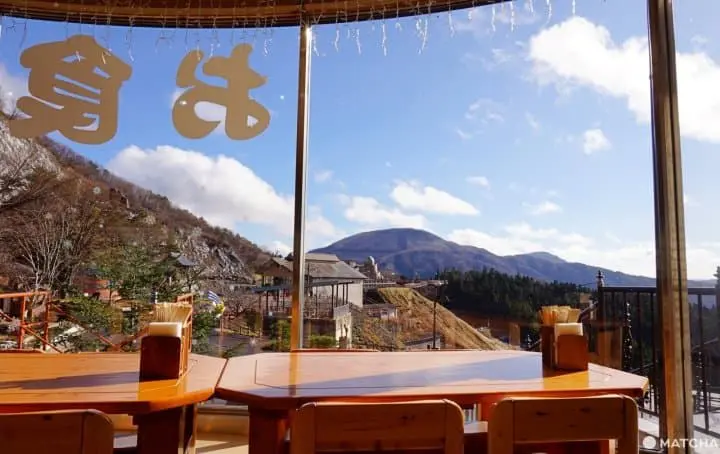
From the second floor window, you'll see a beautiful sprawling landscape outside.

The Junen Misoyaki Set Meal (1,200 yen with tax) is unique to this eatery. The stir-fried pork dish comes with local miso that contains perilla leaves (shiso).
Fukushima natives call perilla "junen," or ten years in Japanese. It's believed that eating perilla leaves will add ten years to your life.
The Japan-Thailand Soccer Exchange
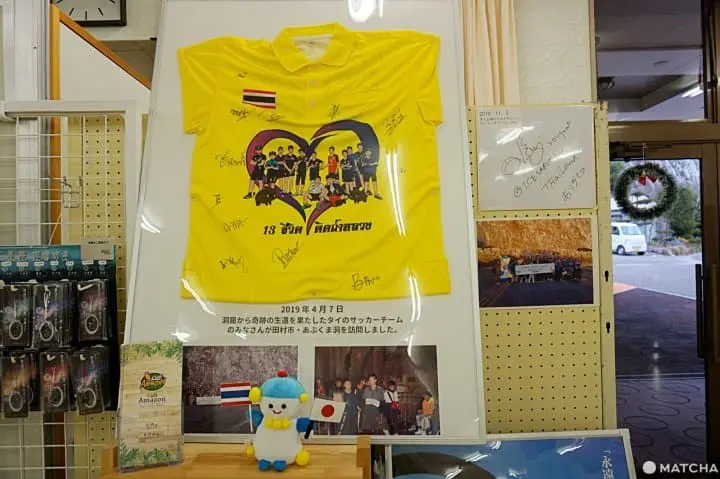
On the first floor, there's a yellow polo shirt signed in Thai on display. This shirt was signed by members from the Wild Boars, a junior soccer team in Thailand. They are the same team that captured the world's attention after being rescued from a cave in northern Thailand in 2018.
Japan provided help in the rescue during the incident. One of the tools used were luminous ceramics made in Fukushima. The company that made the ceramicware later invited the Wild Boars to Japan, acting as a guide to Abukuma Cave and their production factory.
Luna Ware, the luminous ceramic's brandname, can shine brightly in water. The souvenir shop sells a small version of this ceramic. Naturally, it can light your path in Abukuma Cave.
The Four Seasons of Abukuma Cave
The temperature in Abukuma Cave stays a consistent 15°C (59 °F) all year round. Thus, it's a destination known for its comfortable temperature that is warm in winter and cool during summertime. There are also various seasonal pleasures to enjoy outside the cave.
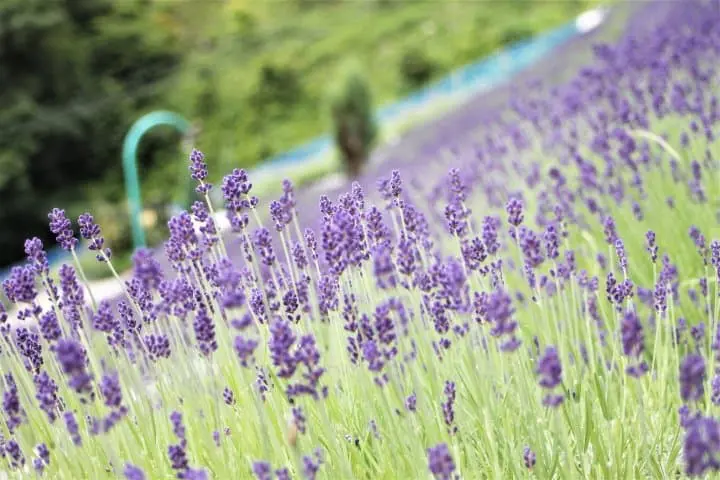
Picture courtesy of Tamura City
Around 50,000 lavender flowers on a hilltop bloom at the cave's entrance in June and July. You can breathe in the sweet-smelling fragrance around the surroundings during the summertime.
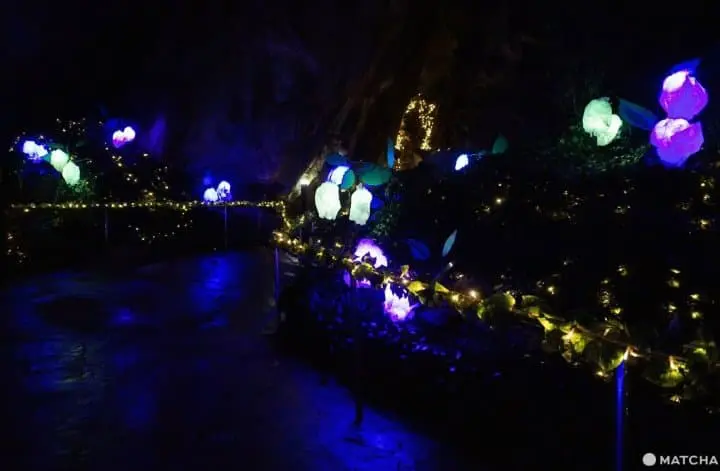
Illuminations are held inside the cave in the winter (the decoration theme changes every year).
Tips Before Sightseeing at Abukuma Cave
There are a total of 300 stairs in Abukuma Cave. This involves a lot of strenuous activity going up and down the stairs. If you decide to go on the Expedition Route, we recommend wearing sneakers and comfortable clothing that you don't mind getting dirty.
While the cave won't flood, there is a chance you'll get slightly wet when touching the walls and floors in narrow areas.
People in wheelchairs, with injuries, and those who have difficulty walking cannot enter the cave. Visitors who are pregnant, intoxicated, or suffer from heart diseases are also prohibited from going inside the cave.
Heading to a cave may not be the first thing that comes to mind when traveling in Japan. However, this will be an experience that exceeds your expectations once you visit for yourself! How about experiencing the splendor of nature in Fukushima Prefecture on your next trip?
Sponsored by Tamura City
Written by Kogetsu




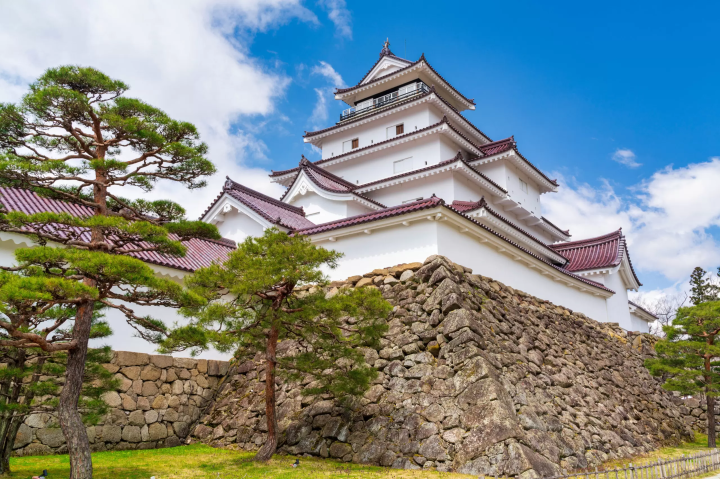




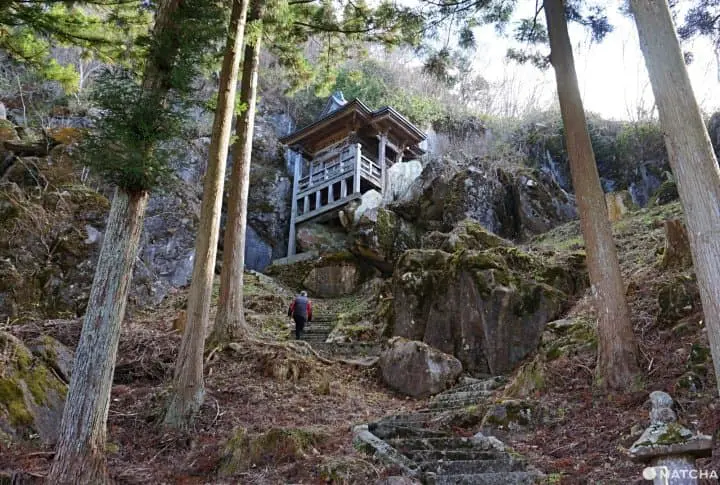

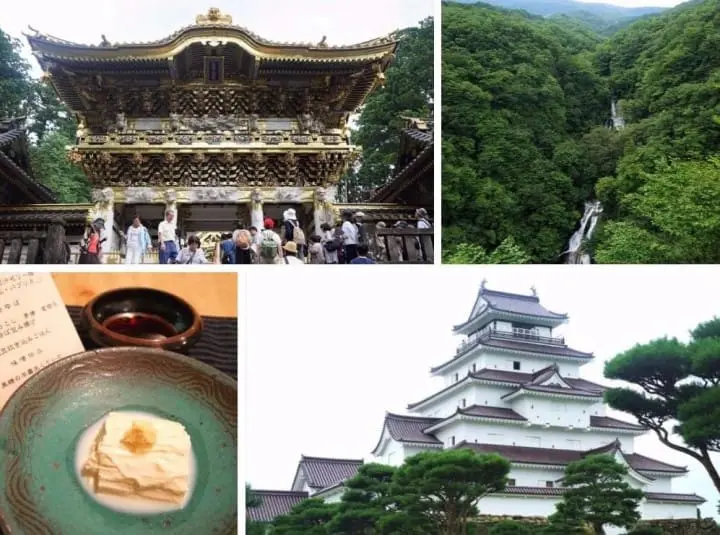

























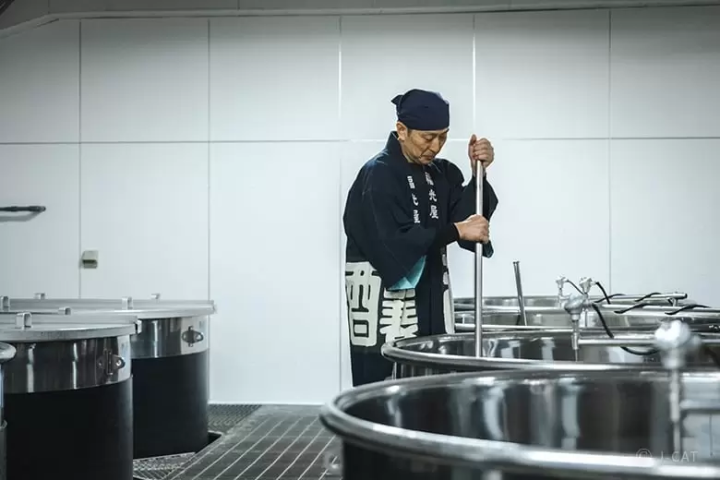
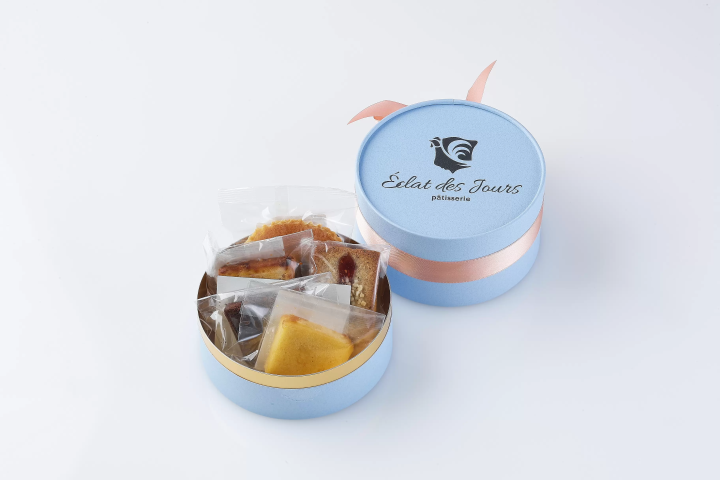
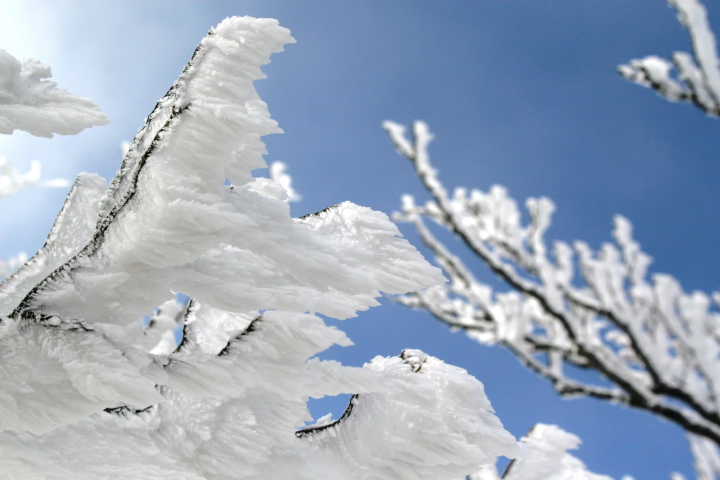
![[Latest] Complete Guide to atmos Exclusive Sneakers and Special Edition Models | Apparel and Upcoming Releases](https://resources.matcha-jp.com/resize/720x2000/2025/12/12-252706.webp)
![[2025-2026 Edition] Four Ski Resorts in Hyogo Prefecture Yabu City Opening on December 27th!](https://resources.matcha-jp.com/resize/720x2000/2025/11/28-251434.webp)